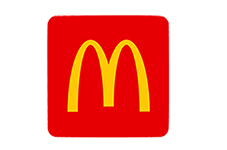Green & Good: McDonald’s Philippines opens 7th sustainable store in Tarlac
More than offering great-tasting food with a fun customer experience, McDonald’s Philippines is committed to making its stores more sustainable. It recently opened its 7th Green & Good flagship store at the Ayala Cresendo development in Luisita, Tarlac as it studies more ways to implement environment-friendly operations in its 700 stores across the country.
The Green & Good program was launched at the height of the pandemic, with its first flagship store located at UN Del Pilar, Manila which opened in March 2020. It was followed by stores in Mandaluyong, Antipolo, Tagaytay, Sta Rosa in Laguna, and Commonwealth Avenue in Quezon City.
Eco-friendly Innovations
Adi Hernandez, assistant vice-president for Corporate Relations & Impact McDonald’s Philippines, says, “Green & Good is our platform that aims to test and learn green solutions that will help build and operate our stores sustainably. Through these, we can learn from best solutions that we can apply as new stores open as well as when we convert the older ones.”

John Jo R. Camacho, manager for the Business Development Group McDonald's Philippines, shares that four pillars under Green & Good are being practiced at the new Ayala Cresendo store:
Green Building Solutions
The green building solutions that were implemented in the store included the use of prefabricated and partially pre-assembled light gauge steel framing that uses 25% recycled steel building frames. As an alternative to traditional masonry, wall partitions are made of fiber cement boards from reused materials which can be recycled into new boards in the future. Eco-friendly low VOC (Volatile Organic Compounds) paint which has low odor and less impact on air quality was used to make the store colorful and welcoming.

Outside, the walkways and perimeter walls are built with blocks made from shredded plastics used as filler material. Each eco-paver and eco-brick are composed of two to three kilograms of shredded and crushed plastics per square meter. Pavements and driveways are made with concrete fiber which has up to 15% recycled material content.
Energy Efficient Solutions
Efficient utility solutions are another cornerstone of the Green & Good program. Power is sourced through a solar rooftop as an alternative source of clean and renewable energy. This initiative saves up to 57,500 kWh of electricity annually. The store also has solar-powered lampposts that operate on electricity from batteries charged by photovoltaic panels. They can sustain 3,100 kw-hr of LED lighting annually without direct power supply equivalent to decreased 722kg of CO2 emissions.

The store has energy management systems which provide real-time monitoring to enable immediate energy saving actions. This eliminates unnecessary hours of electricity waste by as much as 10%. Photo and motion sensors are likewise in place, with automated light activation and deactivation at toilets, storage rooms, and signages. These reduce power usage when lack of light or motion is detected.
To further conserve energy, the store that is open 24/7 uses LED lighting that uses 40% less electricity, and a Variable Refrigerant Flow (VRF) aircon system to save 90,000 kw-hr of electricity annually, which is equivalent to 64,000 kg of CO2 emissions. To help keep the store cool and comfortable, high performance glass film was used on the doors and windows to helps reduce internal building temperature through its reflective properties and high heat rejection.
A water ultrafiltration system helps attain minimum water safety requirements and quality without frequent filter changes while an efficient water heater uses 32% less consumption on both electric and water compared to a conventional model. Low-flow urinals were installed in men’s toilets to use 50% less water from standard models, resulting in 10 cubic meters saved per month.
Packaging and Recycling
Hernandez explains that brands like McDonald’s generate a lot of waste and believes that it is their responsibility to help minimize this through more sustainable packaging such as strawless lids. She adds that they are currently testing improvements to the drink lids with recyclable molded fiber. McDonald’s is also transitioning to not using paper bags by 2024 and some restaurants have implemented reusable containers for in-store dining.
Green Mobility
The Green & Good Cresendo store has a Bike & Dine outdoor dining area which features racks integrated onto the dining ledge itself, so cyclists can dine comfortably while making sure their bikes are upright, safe, and secure. They also provide a Bike Repair Station that includes basic tools required to carry out simple bike repairs or maintenance.

Sustainable Goals
As the Green & Good flagship stores pilot the eco-friendly innovations, some of the environment-friendly initiatives are being practiced at the other McDonald’s stores when applicable, depending on factors such as location and customer profile, explains Hernandez.

Camacho adds, “Sustainability has been a worldwide movement that goes beyond buzzwords. We are waking up to the importance of doing better in terms of how we live, operate, and support brands that align with your advocacy.”
Hernandez says they are opening at least 50 to 60 new McDonald’s stores every year until 2028. “As we open more stores in the country, our aggressive growth doubles as a responsibility to scale and operate McDonald’s stores sustainably. At the same time, we are sharing this sustainability story with our customers. This is not a one-time thing, it is a journey we all must go on together, making small steps to be better for the environment.”
***
Editor's note: BrandedUp is designed to provide you with insightful, inspiring, and educational content created by The Philippine STAR in collaboration with brands like McDonald's Philippines.



